Full size
Following the appointment of Jared Lazerson as new President and CEO of Margaret Lake Diamonds Inc. last December, the company today made the landmark announcement of agreeing to acquire up to 80% interest in the Kiyuk Lake Gold Project in Nunavut, Canada, per an option agreement. This compelling district-scale exploration opportunity not only offers to delineate a new Canadian gold mining camp but also could develop a new value creating direction for Margaret Lake with a current market capitalization of $2 million CAD.
Significant past exploration (e.g. over 13,000 m of drilling in 2008 and 2017) delineated 4 mineralized zones, including the high-grade near surface Rusty Zone, as well as 5 additional high priority target areas yet to be drill tested along with numerous other prospects on the large Kiyuk Lake Property (59,000 hectares).
The most compelling feature of this property is the multiple gold showings extending over a 13 km strike length, with some showings never been drill tested. Other favorable attributes include:
• “Potential at Rusty Zone to define a resource after another season of focused drilling
• Multiple gold showings which require additional drill testing
• Proven exploration techniques ... identify new targets for drilling“ (1)
• Buddy Doyle as Margaret Lake‘s geologist is key to advance this project to the next level as he was previously involved in successful gold and diamonds exploration and development.
• Nowadays, drill results with >100 m averaging >1 g/t gold are not only a rarity but also indicate a major gold system. Most recent drilling in 2017 at the Rusty Zone encountered “122 m at 1.8 g/t gold from 188 m down-hole“. (2) Previous historic drilling intersected:
• “52.4 m at 3.27 g/t Au from surface
• 35.9 m at 4.95 g/t Au from 134.1 m
• 61.5 m at 3.3 g/t Au from 159 m
• 24.1 m at 3.40 g/t Au from 34.0 m“ (3)

Full size
Jared Lazerson, who is also the President and CEO of MGX Minerals Inc., stated in today‘s press-release from Margaret Lake:
“Kiyuk offers a very compelling district-scale exploration opportunity to delineate a new Canadian gold mining camp. Preparations are well underway to conduct an aggressive exploration program in 2019 that will include additional ground magnetic studies to further define drill targets as well as core drilling to expand known zones of mineralization. We look forward to advancing this project to a development-ready stage.”
Best drill results to date include: “38m at 4.2 g/t Au from surface and 36m at 4.95 g/t Au from 134m using a 0.5 g/t Au cut-off. A recent hole returned 250m at 1.6 g/t Au from 8.2m using no cut-off.“ (4)
Rusty Zone
The Rusty Target is the most promising zone of mineralization discovered to date on the year-round accessible Kiyuk Lake Property (590 km2) with a 35-person base camp already on site. According to Margaret Lake: “Mineralization at the high-grade Rusty Zone is predominantly pyrrhotite +/-magnetite with arsenopyrite and pyrite in brecciated and altered sandstone. To date mineralization has been traced to a depth of 200 meters and remains open at depth. The zone has been main focus of historic drilling at Kiyuk. In 2017, drilling within the Rusty zone returned broad intercepts of high-grade gold including:
• 8m of 26.48 g/t gold from 108m, including 2m of 92.76 g/t gold from 110m, in DDH KI17-001
• 38m of 1.16 g/t gold from 58m, including 8m of 3.98 g/t gold from 68m, in DDH KI17-002
• 122m of 1.82 g/t gold from 188m, including 15m of 3.34 g/t gold from 294m, in DDH KI17-004
• 249m of 1.6 g/t gold from 8.2m in DDH KI13-004 (no cut-off)

Full size / Drill intercepts are not true width. True widths are not known at this time. See Cache Exploration Inc. press releases dated October 12, 2017 and October 26, 2017 and Prosperity Goldfields press release dated April 9, 2013. While the Company believes the historical work was performed according to best practices and the exploration data is reliable, a Qualified Person has not verified the results independently.
Gold Point / East Gold Point Zone
The Gold Point Zone comprises a series of locally derived mineralized boulder fields of altered polymictic conglomerate that occur over a 500m long trend. Rock sampling prior to 2012 returned maximum gold assays from this showing of 24.69 g/t. A single boulder 1.35km to the SW graded 1.33 g/t and is along strike of the mineralized ‘horizon’. Around 600m to the NE, at the East Gold Point Zone, mineralized boulders grading up to 2.36 g/t have been found. Drilling in 2017 returned the following intercepts:
• 64m of 1.46 g/t gold from 35m, including 14m of 3.12 g/t gold from 37m, in DDH KI17-005
• 10m of 6.51 g/t gold from 248m in DDH KI17-005"

Full size / Drill intercepts are not true width. True widths are not known at this time. See Cache Exploration Inc. press release dated October 26, 2017. While the Company believes the historical work was performed according to best practices and the exploration data is reliable, a Qualified Person has not verified the results independently.
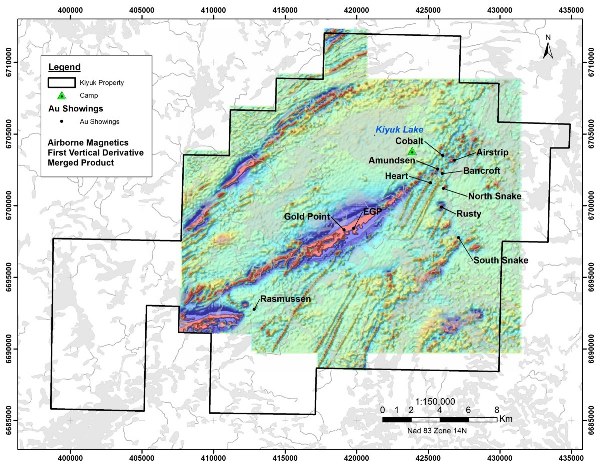
Full size / Airborne magnetic data plan map and location of gold prospects on the Kiyuk Lake Property. Gold mineralization at Kiyuk Lake is most similar to reduced intrusion related gold (RIRG) or iron-oxide-copper-gold (IOCG) deposit models. Mineralization is associated with pyrrhotite, pyrite, arsenopyrite, and magnetite (+/- hematite). The mineralizing event is accompanied by sodic and calcic alteration which occurs as veins and breccia of albite-carbonate-actinolite-quartz ± scapolite ± tourmaline. In areas of intense alteration the host rock is bleached and lack primary textures. Source: Margaret Lake
Results thus far at Rusty Zone and Gold Point / East Gold Point Zone revealed great potential for Kiyuk Lake to be recognized as an extensive new gold camp in Canada, especially if more gold deposits can be delineated on the large property.
Other high priority drill targets according to Margaret Lake:
Cobalt Zone
“The original showing at Cobalt was defined by a 4 x 8m outcrop of sulphide bearing siltstone and oligo-monomictic conglomerate. This rock type is easily weathered and transported down-ice resulting in a mineralized trend of boulders extending southwest from mineralization intersected in drill hole CS11-002 (21.3m @ 2.15 g/t Au). Mineralization intersected in drill holes from 2011 suggests a 250 m strike length. A northeast trending string of lakes is thought to represent a fault or lithological boundary between the siltstone-conglomerate units to the northwest and the carbonate rich units to the southeast. This boundary is also identified in the ground magnetics as a sharp break between the outcrop area (magnetic high) and the limestones (magnetic low). A large concentration of gold bearing conglomerate boulders exists approximately 420m south of the original Cobalt showing area. It is likely that these represent glacially transported boulders, but the distance of transport is unknown. In 2013 these boulders were targeted, in the up-ice direction, by one drill hole which failed to intersect significant gold grades. This area had been targeted with three prior drill holes by Newmont and by Prosperity with all holes suffering cave-in problems forcing abandonment.
Amundsen Zone
The Amundsen Zone is located 850m south of the Cobalt Zone. Historic rock sampling discovered a mineralized boulder train, with samples up to 15.2 g/t Au. The one drill hole completed in this zone was completed in 2012 and was directed at the up-ice limit of the boulder train. It intersected 42m of 0.97 g/t Au including 12m at 2.3 g/t Au from 170m depth.
Rasmussen Prospect
The Rasmussen showing is the westernmost showing identified on the Property to date. This showing was identified during prospecting in 2012 and is defined by gold mineralization in frost heaved conglomerate boulders which are interpreted to have undergone minimal transport. Gold values from boulders at the Rasmussen showing range from 0.1 to 6.9 g/t. The dominant sulphide mineral is pyrrhotite with lesser arsenopyrite. Alteration commonly seen in the zone is albite-actinolite-carbonate.
South Snake Prospect
The South Snake showing is located 4 km South of the Rusty Zone at the south end of Snake Lake. The showing is defined by two 3m long boulders containing strong actinolite alteration and abundant pyrrhotite. The host rock is a clastic rock which has been bleached and brecciated with a carbonate actinolite rich matrix. Sulphides are concentrated in the breccia matrix but are also disseminated in the host rock. Grab rock samples up to 12 g/t Au were discovered prior to 2012 work. The source area for these boulders has not been identified by follow up work and the majority of surrounding rock is largely unaltered.
North Snake Prospect
The North Snake showing is defined by boulders with gold values up to 32 g/t. Two drill holes drilled at North Snake during the spring 2012 program failed to intersect significant mineralization. An additional two holes were drilled in 2013 intersecting hydrothermal breccias hosted in mudstone and siltstone. One interval returned 6m of 1.3 g/t Au in brecciated and quartz-carbonate-actinolite-biotite-magnetite altered mudstone with abundant pyrrhotite in the infill. Prospecting and mapping in 2012 identified a 200m long trend of mineralized boulders (1.0 to 3.84 g/t Au) “up-ice” of the drill holes suggesting the bedrock source is further to the north.
Heart Pond Prospect
The Heart Pond Showing is defined by several large boulders over a 90 x 100m area with gold grades up to 5.3 g/t. The host rock is described as pyrrhotite, pyrite, and arsenopyrite-bearing albite-actinolite-carbonate altered conglomerate.
Airstrip Prospect
The Airstrip showing is defined by a 12m x 12m outcrop that was originally found during prospecting in 1992. Historic rock sampling revealed mineralized samples up to 15.0 g/t Au. The host rock is described as a highly albitized and locally brecciated Tavani siltstone and conglomerate (or felsic volcaniclastic) with massive pale white fine to medium grained albitite, to brecciated rock with albitized clasts floating in actinolite bearing matrix with slight foliation (Turner, 2011). The mineralized outcrop defining the airstrip showing was drilled by Newmont in 2008 but failed to intersect significant gold values.
Cautionary Note: Readers are warned that historical records referred to above have been examined but not verified by a Qualified Person. Further work is required to verify that historical records referred to above are accurate. The historical information is relevant only as an indication that some mineralization occurs on the property, and no resources, reserve or estimate is inferred. A qualified person has not done sufficient work to classify the historical information as current mineral resources or mineral reserves; and neither Margaret Lake Diamonds Inc., Zimtu Capital Corp. nor Rockstone Research, is treating the historical information as current mineral resources or mineral reserves.

Full size / View interactive map on Google
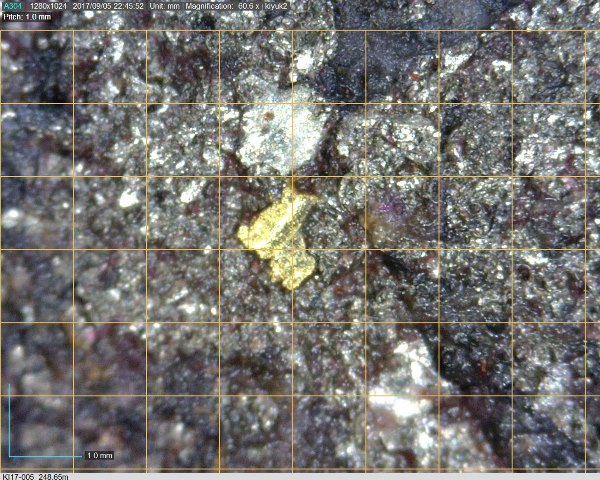
Full size / Visible gold in drill core samples. (7)
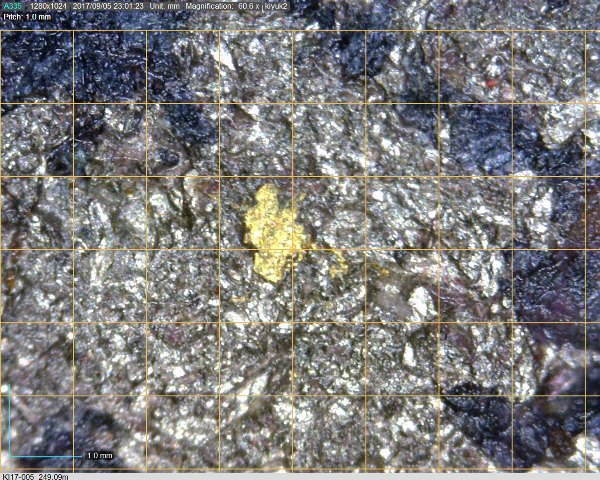
Full size / Visible gold in drill core samples. (8)

Full size / Visible gold in drill core samples. (9) Below: Assays from selected drill core samples.(10)
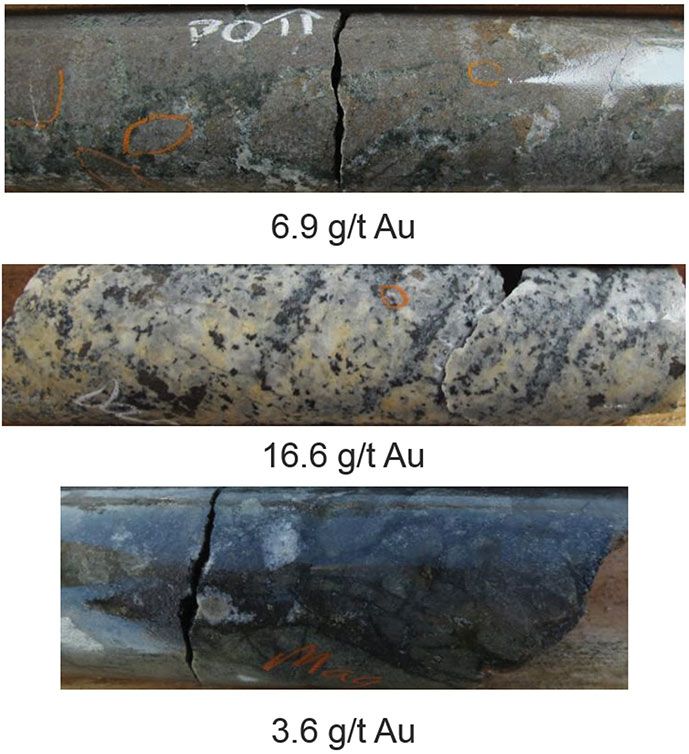

Company Details
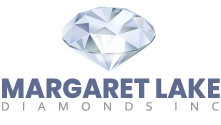
Margaret Lake Diamonds Inc.
#2050 - 1055 West Georgia Street
Vancouver, BC, Canada V6E 3P3
Phone: +1 604 630 2810
Email: jared@margaretdiamonds.com
www.margaretdiamonds.com
Shares Issued & Outstanding: 54,686,587

Chart
Canadian Symbol (TSX.V): DIA
Current Price: $0.04 CAD (02/13/2019)
Market Capitalization: $2 Million CAD

Chart
German Symbol / WKN (Frankfurt): M85 / A2ARXY
Current Price: €0.017 EUR (02/13/2019)
Market Capitalization: €1 Million EUR
Disclaimer: Forward-looking information is typically identified by words such as: "believe", "expect", "anticipate", "intend", "estimate", "potentially" and similar expressions, or are those, which, by their nature, refer to future events. Rockstone Research, Zimtu Capital Corp. and Margaret Lake Diamonds Inc. caution investors that any forward-looking information provided herein is not a guarantee of future results or performance, and that actual results may differ materially from those in forward-looking information as a result of various factors. The reader is referred to the Margaret Lake Diamonds Inc.’s public filings for a more complete discussion of such risk factors and their potential effects which may be accessed through the Margaret Lake Diamonds Inc.´s profile on SEDAR at www.sedar.com. Please read the full disclaimers within the full research reports as a PDF (here) as fundamental risks and conflicts of interest exist. The author, Stephan Bogner, does not hold an equity position in Margaret Lake Diamonds Inc. but he holds a long position in Zimtu Capital Corp. and is being paid by Zimtu Capital Corp., which company holds a long position in Margaret Lake Diamonds Inc. Margaret Lake Diamonds Inc. has paid Zimtu Capital Corp. to provide this report and other investor awareness services.
Contact:
Rockstone Research
Stephan Bogner (Dipl. Kfm.)
8260 Stein am Rhein, Switzerland
Phone: +41 44 5862323
Email: info@rockstone-research.com
www.rockstone-research.com